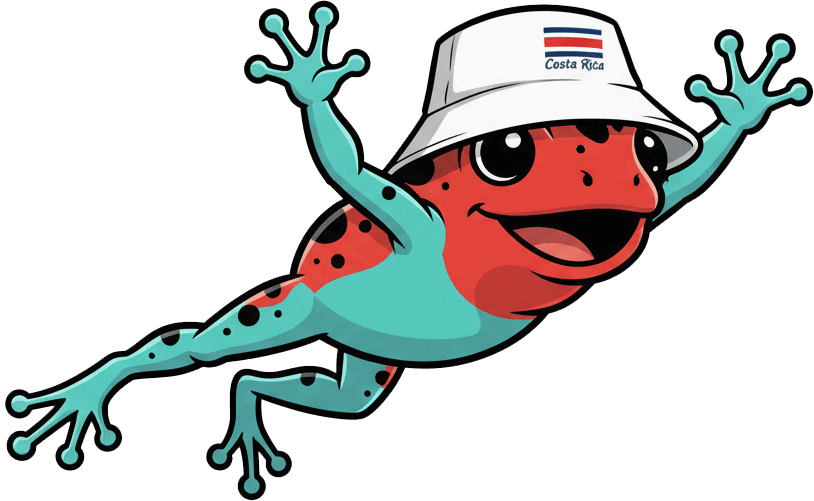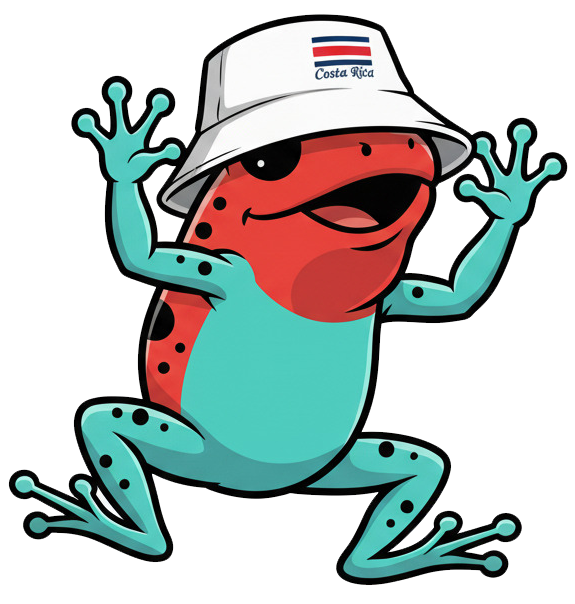Costa Rica, known as the Central American jewel, boasts a rich tapestry woven with diverse cultures, captivating history, and unparalleled biodiversity. From its indigenous roots to its colonial past, Costa Rica’s history is a tapestry of unique customs, traditions, and celebrations. Its cultural blend is a reflection of the ethnic diversity of the country, with indigenous communities, Afro-Caribbean influence, and Spanish heritage all contributing to the fabric of its society.
Join us on a journey through Costa Rica’s tapestry, exploring its ancient history, colonial era, and ecological richness. Whether you’re a nature enthusiast or a history buff, Costa Rica has something to offer everyone. Let’s unravel the intricate threads that make up the tapestry of Costa Rica, and discover the vibrant culture, fascinating history, and breathtaking natural beauty that await you.
Cultural Blend: Unveiling Costa Rica’s Ethnic Diversity
Costa Rica’s rich tapestry is woven from a diverse blend of cultures and ethnicities. The country’s unique history and geographical location have created a melting pot of customs, traditions, and people.
Indigenous communities have inhabited Costa Rica for thousands of years, and their influence can still be felt today. The Chorotega and the Huetar were two of the most prominent indigenous tribes in the region. They left behind a legacy of art, language, and cultural traditions that continue to inspire Costa Ricans today.
The Afro-Caribbean community also played a significant role in shaping Costa Rica’s cultural identity. Descendants of Jamaican immigrants who arrived in the early 1900s, the Afro-Caribbean culture is most visible in the Caribbean provinces of Limón and Cahuita. They brought with them a love of calypso music, reggae, and vibrant Caribbean cuisine.
Spanish colonialism also left an indelible mark on Costa Rica’s culture. Spanish architecture, language, and religion are all visible in the country’s towns and cities. Celebrations like Semana Santa (Easter) and Christmas are important cultural events, and showcase the influence of Spain on Costa Rican heritage.
Costa Rican Traditions and Celebrations
Costa Rica’s diverse ethnic communities and cultural traditions have created a vibrant tapestry of celebrations and festivals throughout the year. One of the most popular events is the Día de los Muertos (Day of the Dead) celebration in November. This festival honors deceased loved ones and is a time of remembrance, music, and food. The Festival Internacional de las Artes (International Arts Festival) is another notable event, featuring performances from artists around the world.
Costa Rica is also known for its colorful traditional dances, such as the Punto Guanacasteco, which originated in the province of Guanacaste. This dance is a playful and flirtatious duet between a man and a woman, accompanied by lively marimba music.
The country’s cuisine is also a reflection of its diverse heritage. Gallo pinto, a mixture of rice and beans, is a staple dish. Caribbean-style rice and beans, known as rice and peas, is also popular. Other dishes feature fresh seafood, tropical fruits, and indigenous ingredients like yucca and plantains.
Costa Rica’s cultural blend has created a nation with a unique identity that is both complex and rich. Its heritage is a tapestry woven from the threads of the past and present, a Central American jewel that is not to be missed.
Exploring Nature’s Masterpiece: Costa Rica’s Biodiversity
Costa Rica is often referred to as the Central American jewel, and for good reason. The country is a treasure trove of natural beauty, boasting stunning landscapes and a breathtaking array of wildlife. From its lush rainforests to its pristine beaches, Costa Rica is a true paradise for nature lovers. Let’s take a closer look at the country’s ecological richness and biodiversity.
| What makes Costa Rica’s biodiversity so unique? | Costa Rica is home to an astonishing 5% of the world’s biodiversity, despite only occupying 0.03% of the earth’s surface. This is due to the country’s unique geography, which includes a range of habitats such as rainforests, cloud forests, volcanoes, and beaches. Plus, strict conservation efforts by the government and local communities have helped protect and preserve the country’s natural resources. |
|---|---|
| What kind of wildlife can be found in Costa Rica? | The country is a hotspot for biodiversity, with a wide range of species on display. From jaguars and monkeys to toucans and sloths, Costa Rica is a nature lover’s dream. The country is also a popular destination for birdwatchers, with over 900 species of birds recorded in the region. |
| How does Costa Rica promote ecotourism? | Costa Rica is a pioneer in ecotourism, with many of its national parks and protected areas open to visitors. The country’s sustainable tourism practices aim to preserve natural habitats and promote community-based tourism. This allows visitors to experience the beauty of Costa Rica while supporting local communities and conservation efforts. |
The biodiversity of Costa Rica is truly a masterpiece of nature, and one that must be experienced to be fully appreciated. The country’s commitment to conservation and sustainable tourism ensures that its natural wonders will be enjoyed by generations to come.
Tracing the Roots: Costa Rica’s Ancient History
Long before the arrival of the Spanish, Costa Rica was inhabited by various indigenous tribes who left an indelible impact on the country’s cultural tapestry. The Chorotega, one of the largest indigenous groups in the region, established a flourishing civilization in what is now known as Guanacaste. They were skilled artisans, creating intricate ceramic and stone sculptures that are still admired today.
The Huetar, who inhabited the Central Valley, were another prominent indigenous group in Costa Rica’s ancient history. They were known for their advanced agriculture techniques, including the cultivation of cocoa, maize, and beans. They also played a significant role in the development of Central America’s trade routes, linking the Pacific and Caribbean coasts.
The arrival of the Spanish in the 16th century marked a turning point in Costa Rica’s history. Unlike other colonizing powers, the Spanish encountered little resistance from the indigenous population, and instead focused on the exploitation of the region’s rich resources, including precious metals and timber. In the centuries that followed, the Spanish influence on Costa Rica’s culture would grow, extending to language, religion, and architecture.
Despite the centuries of colonial rule, Costa Rica’s indigenous heritage has managed to survive and thrive. Today, the country boasts a diverse population that celebrates its cultural roots with pride.
From Colonization to Independence: Costa Rica’s Colonial Era
The Spanish conquest of Costa Rica began in the early 16th century, when Spanish explorer Gil González Dávila arrived on the eastern shore of the country in 1522. Over the next several decades, Spanish forces gradually extended their influence across the region, establishing the colony of New Spain in 1563.
The early years of Spanish rule were marked by conflict with indigenous tribes, who fiercely resisted attempts at colonization. However, over time the Spanish were able to consolidate their control, establishing trading posts and settlements throughout the region. The city of Cartago was founded in 1563, and became the capital of the colony.
| Year | Event |
|---|---|
| 1810 | Costa Rica joins Mexican War of Independence against Spain |
| 1821 | Costa Rica declares independence from Spain, but remains part of the Central American Federation |
| 1838 | Costa Rica declares independence from the Central American Federation |
During the colonial era, Costa Rica’s economy was based primarily on agriculture, with coffee becoming a major export in the 19th century. The country remained relatively isolated from the rest of the world, with few external influences shaping its culture or society.
However, growing discontent with colonial rule eventually led to calls for independence. In 1810, Costa Rica joined the Mexican War of Independence against Spain, and in 1821 it declared independence from Spain. However, it remained part of the Central American Federation, a confederation of five Central American states.
It wasn’t until 1838 that Costa Rica finally declared full independence from the Central American Federation, becoming a sovereign nation. The country’s early years as an independent state were marked by political instability, with several coups and civil wars leading to frequent changes in government. However, the country eventually settled into a period of relative stability, and today it is one of the most democratic and stable countries in Latin America.
Frequently Asked Questions (FAQ) about Costa Rica’s Tapestry
Are there any indigenous tribes still present in Costa Rica?
Yes, Costa Rica is home to eight indigenous groups, including the Bribri, Cabecar, and Guaymi.
What are some typical Costa Rican dishes?
Some traditional dishes include gallo pinto (rice and beans), casado (rice, beans, and meat), and ceviche (marinated seafood).
What is the most visited national park in Costa Rica?
Manuel Antonio National Park is the most visited national park in Costa Rica due to its stunning beaches and biodiversity.
What is ecotourism, and why is it popular in Costa Rica?
Ecotourism is responsible travel to natural areas that conserves the environment and enhances the well-being of local people. It is popular in Costa Rica because of the country’s commitment to preserving its biodiversity and natural resources.
What is the significance of Costa Rica’s National Anthem?
The National Anthem of Costa Rica was written in 1853 and reflects the country’s history and values, including freedom, peace, and democracy.
Are there any famous Costa Rican artists?
Yes, Costa Rica is home to many talented artists, including Francisco Amighetti (painter), Carlos Enrique Vargas (sculptor), and Debi Nova (singer-songwriter).
What is the current population of Costa Rica?
The current population of Costa Rica is roughly 5 million people.
When did Costa Rica become an independent country?
Costa Rica officially declared independence from Spain on September 15, 1821.


